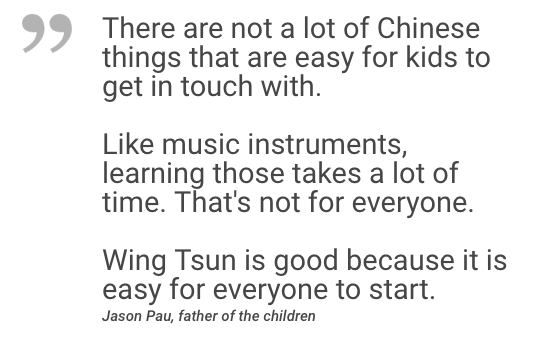The Kung fu films of the 1970s popularized Wing Chun (Eternal springtime in Mandarin) to the West but its origin reads more like a progressive fairy tale than anything else.
It all started with two women. One of them was Ng Mui. She was a nun who escaped the Shaolin Temple before it was destroyed. She developed the martial art as a way of self-defense that “transcend size, weight and gender.” The movements were inspired by a stork that used its wings to attack a rodent and defend itself at the same time.
The second woman was Ng’s student and the martial art’s namesake, Yim Wing Chun. She was a beautiful young woman who was routinely pressured by the town bully. Tired of his rude marriage proposals, Wing Chun learned self defense and became one of Ng’s best students.
It’s a story of two tough female protagonists and the obstacles that sparked the warrior in them.
The principles of Wing Chun was a well-kept secret. But by the late 1940s, Yip Man, one of the few men who learned Wing Chun introduced it to the public when he moved to Hong Kong. One of his students was a young Bruce Lee whose popularity helped preserve the tradition and make Yip’s version of the martial art one of the most well known.
The popularization of the martial art has become an entrypoint for others to discover the values that are at the core of Wing Chun. It introduced the principles of simplicity, directness, practicality, economy of movement, and minimum use of strength to people who may otherwise won’t give these ideas a second look.
Li Wing Kay is a Crane Style Kung Fu master who has lived in Brazil for 46 years. He developed his own version of the martial art which he teaches people from different cultures. To him, Kung Fu is more than just a sport, art, or means of self defense: “Administration. Not only for commerce, but for daily life. How to administrate life. If you cannot deal with life, it’s worthless. If you are disorganized, how do you help others?”
Keeping the core principles while being flexible enough to fit the a new generation lets the martial art stand the test of time.
It is made eternal.
And that might just be the real secret.
Si Fu Leung Ting loves to talk about the past.
A Wing Chun practitioner since he was 13 years old, he is one of the apprentices of the legendary Si Fu Yip Man. The Master taught him the essential tenets of the martial art: technical excellence, and respect of ancient Chinese values.
However, his is far from a story of calm training and education: very soon, he had to struggle with conflict and adaptation. When he turned into a Master, it became clear to him that Wing Chun couldn’t keep its old tradition of secrecy and small training schools.
For him, those were the legacies of the time when Kung Fu was the art of the secret societies who resisted the yoke of the Qing Dynasty. Politics had changed, and it was time for Wing Chun to evolve, too.
The first element that had to change was the key to Wing Chun’s future: its teaching system.
“Wing Chun has a core principle, which is both its strength and its weakness: it is unpredictable. There are no stable movements, you always act and respond from your instinct”, Leung Ting said. “How do you teach that?”
The Si Fu spent a long time trying to devise an efficient and respectful teaching system.
In the end, he inspired himself on public education, dividing Wing Chun training into different teaching levels, giving his own style and system another name, Wing Tsun. This method was essential to spread Wing Tsun around the world: if one begins to learn in one country, he can pursue his training elsewhere, by continuing in the same training level he left before.
However, this systemic level has a catch: it is just a small fraction of the road to mastery.
“Once you reach the highest level of training, there is still much to learn if you want to be a Master”, Leung Ting Said. “To do so, you must come back to zero, forget the method, and start to hone your instinct. The method is an introduction, but the key to mastery is to be perfectly natural.”
At first, Yip Man didn’t like Leung Ting’s training method. And even though he opened up to it as he got older, he waited until the very end of his life to teach him everything he knew.
Amelia Pau and Lucien Pau are sister and brother. They have been practiced Wing Tsun for eight weeks. Their father takes them to school every week and they really enjoy. Though still being starters, they have developed deep interests in this traditional Chinese martial art.

Amelia and Lucien are studying in an international school. They speak English, Mandarin and Cantonese fluently. Mr. Pau said: “The community they are in is very western based. It is very important for them to learn Chinese culture and the values through activities like Kung Fu.”
